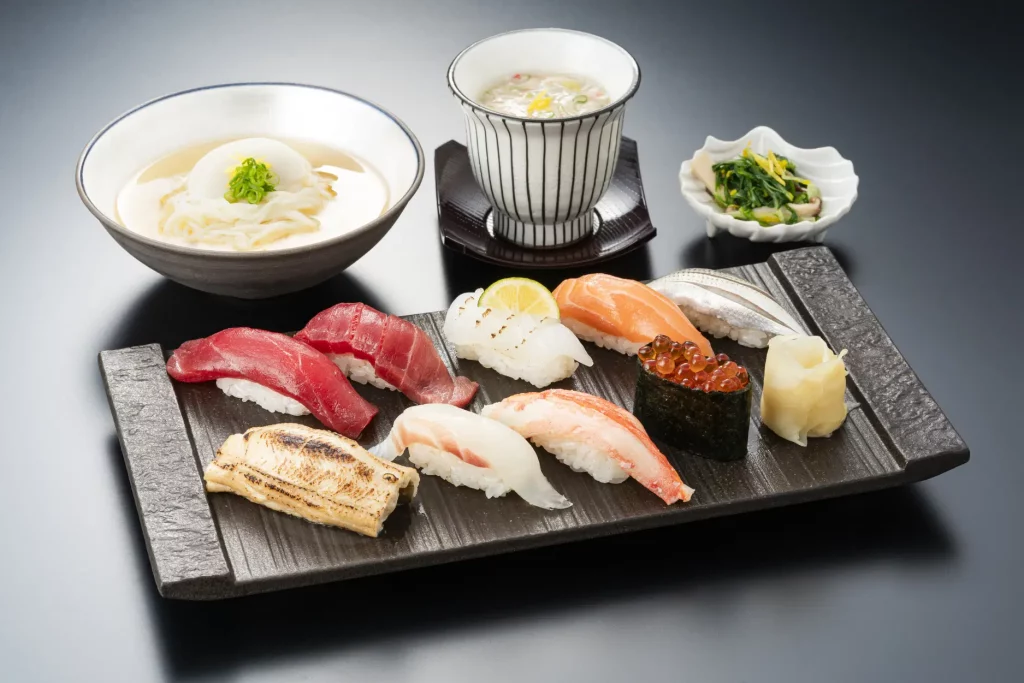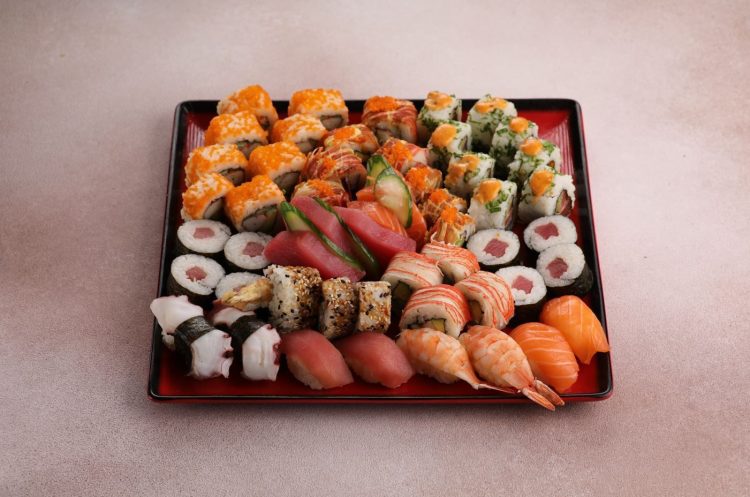When it comes to unforgettable food journeys, Japan and Italy are two countries that immediately come to mind. Each offers a culinary world so rich in tradition, philosophy, and technique that eating becomes a cultural immersion rather than a simple necessity. But what truly makes their cuisines legendary isn’t just the flavors—it’s the way these nations treat food as an art form, a connection to heritage, and a daily celebration of life’s pleasures. While their ingredients, cooking styles, and culinary philosophies differ, Japan and Italy share a deep respect for freshness, seasonality, and authenticity. Their food culture isn’t just about what’s on the plate—it’s about how the food came to be, where it comes from, and the stories it tells. From the zen-like focus of a Japanese sushi master to the rustic joy of an Italian grandmother hand-rolling pasta, dining in Japan and Italy is an experience that lingers in memory long after the last bite.
Japan’s Culinary Culture: Sushi, Ramen, and Kaiseki—Exploring Japan’s Essential Dishes
Japanese cuisine is a blend of precision, purity, and poetry. Its essence lies in the reverence for ingredients and the seamless harmony between flavor, presentation, and seasonality. It’s no surprise that Japan has one of the highest concentrations of Michelin-starred restaurants in the world, especially in cities like Tokyo and Kyoto. The Japanese dining experience is not just about eating—it’s about engaging all the senses.
Sushi is perhaps the most iconic representation of Japanese cuisine. Yet sushi is not simply raw fish over rice; it is a discipline, a craft honed over years of apprenticeship. A true sushi chef understands the nuances of rice temperature, vinegar ratio, knife skills, and seasonal fish selection. In high-end omakase-style sushi dining, guests surrender their choices to the chef, trusting them to guide the palate through an elegant, carefully curated sequence of flavors.
Ramen, in contrast, is the epitome of comfort food—deeply satisfying and diverse. Originally influenced by Chinese noodle soup, ramen has evolved into a cult culinary icon in Japan, with each region boasting its own version. Whether it’s the rich pork-bone broth of Hakata-style tonkotsu ramen or the miso-based bowls of Sapporo, every slurp tells a story of regional identity and culinary evolution. Standing in line outside a Tokyo ramen-ya at midnight is more than acceptable—it’s a rite of passage for ramen lovers.
Kaiseki, Japan’s traditional multi-course haute cuisine, is the epitome of refinement. It draws inspiration from the changing seasons and the aesthetics of tea ceremony traditions. A kaiseki meal is meticulously composed of several small courses that highlight texture, temperature, and presentation. From a delicate sashimi arrangement on a hand-crafted ceramic dish to simmered vegetables served in seasonal motifs, every detail is intentional. Kyoto, the spiritual home of kaiseki, remains a must-visit for travelers seeking this refined culinary experience.
Beyond the globally known dishes, Japanese cuisine encompasses everyday marvels like okonomiyaki (savory pancakes), takoyaki (octopus balls), and the humble but exquisite bento boxes. It’s this ability to turn even the simplest meal into an aesthetic and gustatory delight that elevates Japanese cuisine into an art form.
Italy’s Culinary Heritage: From Pasta to Pizza, Why Italy Remains the Heart of the World’s Culinary Creativity
Italian cuisine is passionate, loud, and deeply rooted in family and tradition. While Japanese cuisine is built on restraint and balance, Italian food thrives on bold flavors, abundant ingredients, and a joyful approach to cooking. What makes Italian food unforgettable is not just the richness of its flavors, but the diversity that exists from region to region. In Italy, every village, every grandmother, and every vineyard has a secret recipe or an old method passed down through generations.
Pasta is the soul of Italian cooking. Yet there is no such thing as a generic pasta dish in Italy. Each region has its own shape, sauce, and culinary philosophy. In Rome, carbonara reigns with its creamy mixture of egg, pecorino, and guanciale. In Bologna, you’ll find tagliatelle al ragù, the original version of what the world mistakenly calls “spaghetti Bolognese.” Southern Italy brings orecchiette with broccoli rabe or seafood linguine, celebrating the Mediterranean’s bounty. Making fresh pasta is an act of devotion—a dance of flour and eggs that captures Italy’s culinary soul.

Pizza, originally from Naples, is arguably the most famous dish to emerge from Italy. True Neapolitan pizza follows strict guidelines: San Marzano tomatoes, buffalo mozzarella, and dough that’s slow-fermented and cooked in a wood-fired oven at high heat. The simplicity is deceptive—it’s a dish perfected by technique and the purity of its few ingredients. Beyond Naples, cities like Rome offer their own versions, such as thin, crispy pizza Romana or the popular pizza al taglio served by weight in bakeries.
Italy’s culinary creativity extends beyond pasta and pizza. Risotto in Milan, truffles in Piedmont, arancini in Sicily, and seafood feasts along the Amalfi Coast highlight the regionality and richness of Italian food. In Tuscany, food and wine are inseparable, with Chianti perfectly complementing a hearty bistecca alla fiorentina. In Emilia-Romagna, the “breadbasket of Italy,” cured meats like prosciutto di Parma and cheeses like Parmigiano Reggiano define the local identity.
What ties all of Italy together is a celebration of ingredients—olive oil, fresh herbs, sun-ripened tomatoes, and the land itself. Meals are never rushed. The table is sacred. Family, friends, and conversation are as essential as the food itself.
Foodie Travel Experiences: Top Destinations for Food Lovers in Both Countries
Japan:
- Tokyo: A culinary capital with more Michelin stars than any other city, Tokyo offers everything from exquisite sushi counters to hole-in-the-wall noodle shops. Neighborhoods like Shinjuku and Tsukiji are great for street food and fresh seafood markets, while upscale dining districts like Ginza are home to the best omakase experiences.
- Kyoto: The birthplace of kaiseki cuisine, Kyoto is ideal for travelers who want to experience traditional Japanese food in a serene, historical setting. The Gion district is especially atmospheric, with centuries-old restaurants and tea houses.
- Osaka: Known as Japan’s “kitchen,” Osaka is famous for its street food culture. Dotonbori street is a carnival of flavors—try takoyaki, okonomiyaki, and kushikatsu while soaking in the lively atmosphere.
- Hokkaido: A paradise for seafood lovers, Hokkaido offers some of Japan’s freshest catches, as well as dairy products, miso ramen, and unique regional flavors.
Italy:
- Naples: The birthplace of pizza, Naples is an essential stop for any foodie. Sample authentic Margherita pizza at one of the city’s legendary pizzerias like Da Michele or Sorbillo.
- Bologna: The capital of Emilia-Romagna, Bologna is often considered Italy’s food capital. This is the place to try traditional tagliatelle al ragù, tortellini in brodo, and balsamic vinegar from nearby Modena.
- Florence: Tuscany’s regional cuisine shines in Florence. Visit a countryside agriturismo for a farm-to-table meal and taste wines at historic Chianti estates. Florence is also home to vibrant markets like Mercato Centrale, where locals and tourists mingle over plates of cured meats and cheeses.
- Sicily: An island with a culinary identity of its own, Sicily blends Arab, Greek, and Spanish influences. From arancini and caponata to cannoli and granita, the island’s cuisine is as vibrant as its landscapes.
- Rome: A must-visit for lovers of simple but impactful food. Roman dishes like cacio e pepe, amatriciana, and supplì are the cornerstones of the city’s food culture.
Conclusion: Culinary Journeys that Feed the Soul
Japan and Italy’s culinary traditions are unforgettable not just because of the food, but because of the cultural depth each dish represents. Both countries treat cooking as a sacred ritual—a way of life that reflects history, geography, and community. Japan teaches us the beauty of restraint and precision, while Italy shows us the power of passion and abundance. Together, they offer two paths to culinary enlightenment, each as rich and rewarding as the other. For travelers who seek not just to taste but to understand, Japan and Italy are more than destinations—they are lessons in the art of living well, one unforgettable bite at a time.





















